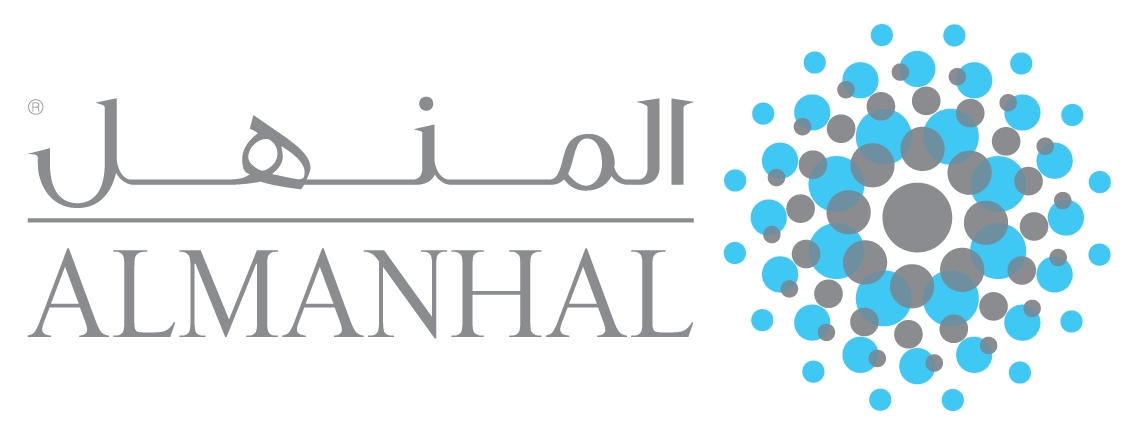The Influence of Financial Education on Consecutive Debt-taking Behaviour of Low-Income Households in Indonesia
DOI:
https://doi.org/10.31436/jif.v6i0.261Keywords:
financial education, financial inclusion, debt-taking, low income households, IndonesiaAbstract
Debt is considered as one of the major sources of funds from third party, especially for low-income households. Even though Islam allows debt, it should not be used recklessly. Taking one debt after another is apparently not suggested for the low-income households although it is common among them. In order to understand the consecutive debt-taking behaviour among the low income households in Indonesia as well as the role of financial education in influencing this behaviour, this study adopts the Structural Equation Modelling (SEM) to analyse pertinent data elicited from 1,780 low-income households from six areas in Indonesia. The study finds that financial education has positive effect on using debt consecutively albeit wisely for fulfilling family needs. By wisely, it means that the low income households are able to control their desire and satisfaction, thus practicing the true spirit of consumption as proposed in Islam.
Downloads
References
Ajzen, I., & Fishbein, M. (1969). The prediction of behavioral intentions in a choice situation. Journal of Experimental Social Psychology, 5(4), 400–416. http://doi.org/10.1016/0022-1031(69)90033-X
Arsyianti, L. D., & Kassim, S. (2015). Regular charity giving of low-income households in Indonesia. In 4th International Conference on Inclusive Islamic Financial Sector Development, 17-18 November 2015, Islamabad, Pakistan. Islamabad, Pakistan: International Institute of Islamic Economics (IIIE), International Islamic University Islamabad (IIUI) and IRTI-IDB.
Arsyianti, L. D., & Kassim, S. (2016). Regular charity giving behaviour among low- income households in Indonesia. Intellectual Discourse, 1(24), 133–156. Retrieved from http://journals.iium.edu.my/intdiscourse/index.php/islam/article/view/653/556
Aryeetey, E. (1998). Informal Finance for Private Sector Development in Africa. Retrieved from chrome-extension://ecnphlgnajanjnkcmbpancdjoidceilk/http://core.ac.uk/download/pdf/6590789.pdf
Bagozzi, R. P., Baumgartner, J., & Yi, Y. (1989). An investigation into the role of intentions as mediators of the attitude-behavior relationship. Journal of Economic Psychology, 10(1), 35–62. http://doi.org/10.1016/0167-4870(89)90056-1
Balkenhol, B., & Schutte, H. (2001). Collateral , Collateral Law and Collateral Substitutes (2nd Edition) (No. 26). Geneva. Retrieved from:
http://www.ruralfinance.org/fileadmin/templates/rflc/documents/1159347295412_ILO_collateral_law.pdf.
Bank Indonesia. (2014a). Financial Stability Review No.23, September 2014
Bank Indonesia. (2014b). Booklet Keuangan Inklusif. Departemen Pengembangan Akses Keuangan dan UMKM, Bank Indonesia. Retrieved from
http://www.bi.go.id/id/perbankan/keuanganinklusif/edukasi/Contents/BukuSakuKeuangan Inklusif.pdf.
Bertola, G., Disney, R., Grant, C., Jentzsch, N., Riestra, A. S. J., Crook, J. N., … Pagano, M. (2006). The Economics of Consumer Credit. (G. Bertola, R. Disney, & C. Grant, Eds.). Cambridge: The MIT Press.
Bollen, K.A., & Long, J.S. (1993). Introduction. In K.A. Bollen & J.S. Long (Eds). Testing Structural Equation Models. Beverly Hills, CA: SAGE Publications, Inc.
[BPS] Central Board of Statistic, Indonesia. (2014). Laporan Bulanan Data Sosial Ekonomi. Katalog BPS: 9199017 (Vol. 45). Retrieved from http://www.ncbi.nlm.nih.gov/pubmed/15003161.
[BPS] Central Board of Statistic, Indonesia. (2015). Trends of Selected Socio-Economic Indicators of Indonesia. August 2015. Jakarta: BPS
Brown, S., Garino, G., Taylor, K., & Price, S. W. (2005). Debt and financial expectations: An individual- and household-level analysis. Economic Inquiry, 43(1), 100–120. http://doi.org/10.1093/ei/cbi008
Carney, S., & Gale, W. (2001). Asset accumulation among low-income households. In “Benefits and Mechanisms for Spreading Asset Ownership in the United States,†December 10-12, 1998, New York, NY (pp. 165–205). New York: Ford Foundation. Retrieved from http://books.google.com/books?hl=en&lr=&id=PyrV4uFtHrMC&oi=fnd&pg=PA165&dq=Asset+Accumulation+Among+Low-Income+Households+*&ots=cMkL5umwfV&sig=dNIsqq5kr3ZABsQ5tmB-lFlwJKE\nhttp://books.google.com/books?hl=en&lr=&id=PyrV4uFtHrMC&oi=fnd&pg=PA165&dq=Asset+ac
Chien, Y., & Devaney, S. A. (2001). The Effects of Credit Attitude and Socioeconomic Factors on Credit Card and Installment Debt. The Journal of Consumer Affairs, 35(I), 162–179. http://doi.org/10.1111/j.1745-6606.2001.tb00107.x
Departemen Keuangan. (2013). Financial Inclusion: Strategi Nasional Keuangan Inklusif (SNKI). Jakarta: Ministry of Finance Republic of Indonesia. Retrieved from http://www.fiskal.depkeu.go.id/2010/adoku/2013\publikasi\pkrb\Financial Inclusion (SNKI).pdf
DeVaney, S. a. (1994). The Usefulness of Financial Ratios as Predictors of Household Insolvency: Two Perspectives. Financial Counseling and Planning Journal, 5(1), 5–24.
Diamantopoulos, A. & Siguaw, JA. (2000). Introducing LISREL. London: SAGE Publication Ltd.
Dowsett, C. J., Huston, A. C., & Imes, A. E. (2009). Structural and Process Features in Three Types of Child Care for Children from High and Low Income Families. Early Childhood Research Quarterly, 23(1), 69–93. http://doi.org/10.1016/j.ecresq.2007.06.003.
Georgarakos, D., & Fürth, S. (2015). Household repayment behavior: The role of social capital and institutional, political, and religious beliefs. European Journal of Political Economy, 37, 249–265. http://doi.org/10.1016/j.ejpoleco.2014.10.001.
Gopi, M., & Ramayah, T. (2007). Applicability of theory of planned behavior in predicting intention to trade online: Some evidence from a developing country. International Journal of Emerging Markets, 2(4), 348–360. http://doi.org/10.1108/17468800710824509.
Hair, JF., Black, WC., Babin, BJ., Anderson, RE., Tatham, RL. (2006). Multivariate Data Analysis, Sixth Edition. New Jersey: Pearson Education, Inc.
Halim, A., Hamid, A., Azmin, N., & Nordin, M. (2001). A Study on Islamica Banking Education and Strategy for The New Millenium - Malaysian Experiance. International Journal of Islamic Financial Services, 2(4), 2–11.
Hartoyo, & Aniri, N. B. (2010). Analysis of Welfare Level of Fish Farmer Family and Non-Fish Farmer Family in Bogor Distric. Jurnal Ilmu Keluarga Dan Konsumen, 3(1), 64–73. Retrieved from http://jurnal.ipb.ac.id/index.php/jikk/article/view/5185/3579.
Hogarth, J. M. (2006). Financial Education & Economic Development. Retrieved from http://search.oecd.org/daf/fin/financial-education/37723380.pdf.
Jöreskog, K. G., & Sörbom, D. (1993). LISREL 8: Structural equation modeling with the SIMPLIS command language. Scientific Software International.
Jöreskog, K. G., & Sörbom, D. (1996). LISREL 8: User's reference guide. Scientific Software International.
Jöreskog, K. G. (1994). On the estimation of polychoric correlations and their asymptotic covariance matrix. Psychometrika, 59(3), 381-389.
Jöreskog, K. G. (1990). New developments in LISREL: Analysis of ordinal variables using polychoric correlations and weighted least squares. Quality & Quantity, 24(4), 387-404.
Jöreskog, K. G. (2006). Lisrel. Encyclopedia of Statistical Sciences.
Jöreskog, K. G., Sörbom, D., & Du Toit, S. H. C. (2001). LISREL 8: New statistical features. Scientific Software International.
Kakisina, L. O. (2011). The Analysis of Household Income and Poverty in the Transmigration Area: A Case in Waihatu Village, Kairatu Subdistrict, West Seram District, Maluku Province). Jurnal BudidayaPertanian, 7(2), 65–71.
Keese, M. (2009). Triggers and Determinants of Severe Household Indebtedness in Germany. Ruhr Economic Papers, (150).
Keese, M. (2012). Who feels constrained by high debt burdens? Subjective vs. objective measures of household debt. Journal of Economic Psychology, 33(1), 125–141. http://doi.org/10.1016/j.joep.2011.08.002.
Kelloway, EK. (1998). Using LISREL for Structural Equation Modelling: A Researcher’s Guide. Thousand Oaks, CA: SAGE Publications, Inc.
Lea, S. E. G., Webley, P., & Levine, R. M. (1993). The economic psychology of consumer debt., 14(June 1991), 85–119. http://doi.org/10.1016/0167-4870(93)90041-I.
Lindenberg, S. (1996). Continuities in the theory of social production functions. (H. Ganzeboom & S. Lindenberg, Eds.)Verklarende Sociologie: Opstellen voor Reinhard Wippler. Amsterdam: Thela Thesis. Retrieved from http://www.gmw.rug.nl/~lindenb/documents/articles/1996_Lindenberg-Continuities_in_theory_of_ SPF.pdf.
Lins, K. V, Servaes, H., & Tufano, P. (2007). What Drives Corporate Liquidity? An International Survey of Cash Holdings and Lines of Credit. Business.
Livingstone, S. M., & Lunt, P. K. (1992). Predicting personal debt and debt repayment: Psychological, social and economic determinants. Journal of Economic Psychology, 13(1), 111–134. http://doi.org/10.1016/0167-4870(92)90055-C.
Lyons, A. C., Chang, Y., & Scherpf, E. M. (2006). Translating Financial Education into Behavior Change for Low-Income Populations. Journal of Financial Counseling and Planning, 17(2), 27–45. Retrieved from http://papers.ssrn.com/sol3/papers.cfm?abstract_id=2232122.
Lyons, A., Neelakantan, U., & Scherpf, E. (2008). Gender and Marital Differences in Wealth and Investment Decisions. Journal of Personal Finance, 6(4), 57–76.
Mandell, L., & Klein, L. S. (2009). The Impact of Financial Literacy Education on Subsequent Financial Behavior. Journal of Financial Counseling and Planning, 20(206), 15–24. Retrieved from http://www.eric.ed.gov/ERICWebPortal/contentdelivery/servlet/ERICServlet?accno=EJ859556
Mann, D., Narayanan, C., Caparusso, J., & Chandra, P. (2013). Asia leverage uncovered. Standard Chartered Global Research, July, 2013.
Martin, M. (2007). A literature review on the effectiveness of financial education. Federal Reserve Bank of Richmond Working Paper No 07-03, June 15, 2007.
Mbau, L. (2008). Perbandingan Metode Pendugaan Parameter dalam Pemodelan Persamaan Struktural (Comparison of Parameter Estimation Methods in Structural Equation Modeling). Bogor Agricultural University.
Mueller, RO. (1996). Basic Principles of Structural Equation Modelling: An Introduction to LISREL and ESQ. New York: Springer-Verlag New York, Inc.
Mohammed, M. O. (2011). Economic Consumption Model Revisited: Infak Model Based on Al-Shaybani’s Level of Kasb. International Journal of Economic, Management and Accounting, 19(Supplementary Issues), 115–132.
Nord, M. (2007). Characteristics of Low-Income Households With Very Low Food Security: An Analysis of the USDA GRPA Food Security Indicator. Economic Information Bulletin Number 25. Retrieved from http://www.ers.usda.gov/publications/eib-economic-information-bulletin/eib25.aspx
Obaidullah, M. (2008). Introduction to Islamic Microfinance. New Delhi: IBF Net (P) Limited. http://doi.org/10.1355/SJ23-1D.
Ormel, J., Lindenberg, S., Stevererink, N., & Verbrugge, L. M. (1999). Subjective well-being and social production functions. Social Indicators Research, 46(1978), 61–90.
Pallant, J. (2005). SPSS Survival Manual: A Step by Step Guide to Data Analysis Using SPSS. Sydney:
Pattarin, F., & Cosma, S. (2012). Psychological determinants of consumer credit: the role of attitudes. Review of Behavioral Finance, 4(2), 113–129. http://doi.org/10.1108/19405971211284899.
Plagnol, A. C. (2011). Financial satisfaction over the life course: The influence of assets and liabilities. Journal of Economic Psychology, 32(1), 45–64. http://doi.org/10.1016/j.joep.2010.10.006.
Pollard, D. (1997). Variances and covariances. In Statistics 241 (pp. 1–6). Retrieved from http://www.stat.yale.edu/~pollard/Courses/241.fall97/Variance.pdf.
Pressman, S., & Scott, R. H. (2009). Who are the Debt Poor ? Journal of Economic Issues, XLIII(2), 423–433. http://doi.org/10.2753/JE10021-3624430215.
Ross. (2003). Fundamentals of Corporate Finance (Sixth, Vol. 1). McGraw-Hill Primis Online. Retrieved from http://fi.qu.edu.az/~faliyev/books/f_ross.pdf.
Sahi, S. K. (2013). Demographic and socio-economic determinants of financial satisfaction: A study of SEC-A segment of individual investors in India. International Journal of Social Economics, 40(2), 127–150. http://doi.org/10.1108/03068291311283607
Saleem, Q., & Rehman, R. U. (2011). Impacts of liquidity ratios on profitability (Case of oil and gas companies of Pakistan). Interdisciplinary Journal of Research in Business, 1(July), 95–98.
Sipon, S., Othman, K., Ghani, Z. A., & Radzi, H. M. (2014). The Impact of Religiosity on Financial Debt and Debt Stress. Procedia - Social and Behavioral Sciences, 140, 300–306. http://doi.org/http://dx.doi.org/10.1016/j.sbspro.2014.04.424
The Economist (2014). http://www.economist.com/news/economic-and-financial-indicators/21588882-household-debt-asia.
Widarjono, A. (2015). Analisis Multivariat Terapan: Dengan Program SPSS, AMOS, dan SMARTPLS, Second Edition. Yogyakarta: UPP STIM YKPN.
Wijanto, SH. (2008). Structural Equation Modelling dengan LISREL 8.8: Konsep dan Teori. Yogyakarta: Graha Ilmu.
World Bank. (2013). World Development Indicators 2013. World Bank. http://doi.org/10.1596/978-0-8213-9824-1
Xiao, J. J., & Wu, J. (2008). Completing Debt Management Plans in Credit Counseling : An Application of the Theory of Planned Behavior. Journal of Financial Counseling and Planning, 19(2), 29–45.
Yilmazer, T., & Lyons, A. C. (2010). Marriage and the Allocation of Assets in Women’s Defined Contribution Plans. Journal of Family and Economic Issues, 31(2), 121–137. http://doi.org/10.1007/s10834-010-9191-6












